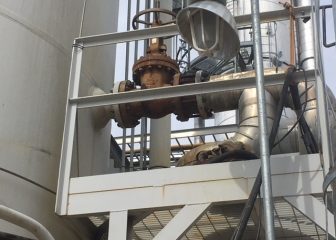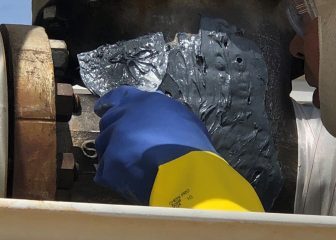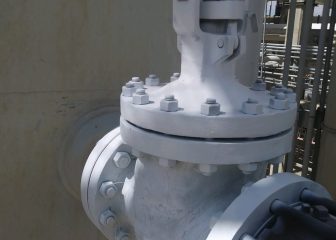New Mexico
Pipe Details
- 6-inch (152-mm) cast valve containing amine developed a pinhole leak measuring <0.25 inch (6.35 mm)
- 600 psi (41.3 bar) operating pressure
- 38°C (100°F) operating temperature
Summary
- A 6-inch (152-mm) cast valve containing amine developed a pinhole leak
- 2 CSNRI trained and certified technicians completed the repair in 4 hours
- A restricted working area and the unique shape of the valve required precut fabric
- The temporary repair ensured operations could be resumed safely until the next turnaround, scheduled within a year
- No hot work was required during the repair application
When a refinery owner in New Mexico discovered a pin-hole in a 6-inch (152-mm) cast valve that was weeping amine into the air, efforts began immediately to find a repair. The valve was operating under 600 psi (41.3 bar) operating pressure and at a temperature of 100°F (38°C). The primary objective was to arrest the leak and restore line integrity with the least possible disruption to operations.
It was critical to avoid shutting down the refinery, but there could be no shortcuts. The repair would have to be safe and introduce no additional risk to an already fraught situation.
CSNRI provided the solution. A team of 2 CSNRI trained and certified technicians used leak stop filler and a square patch of fiberglass to address the weeping leak while the system was online. Once the leak was safely contained, the technicians completed the repair, using fabric that had been measured and precut to ensure a proper fit on the uniquely shaped valve. Preparing the components in advance was especially important because of the confined work space around the valve.



Following an established installation process, the 2-man team was able to prepare the damaged area and complete the installation on the active line in approximately 4 hours, following up with recoating the next day and saving the refinery from lost production that would have cost several thousands of dollars per hour.
The installation was completed at a cost of less than $1,000 in materials, producing a repair that would allow safe operation until the next scheduled turnaround, about a year later.

